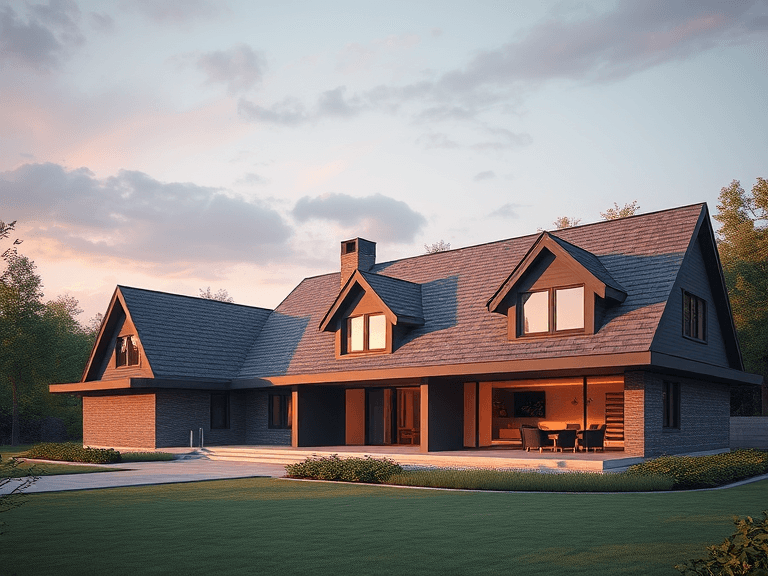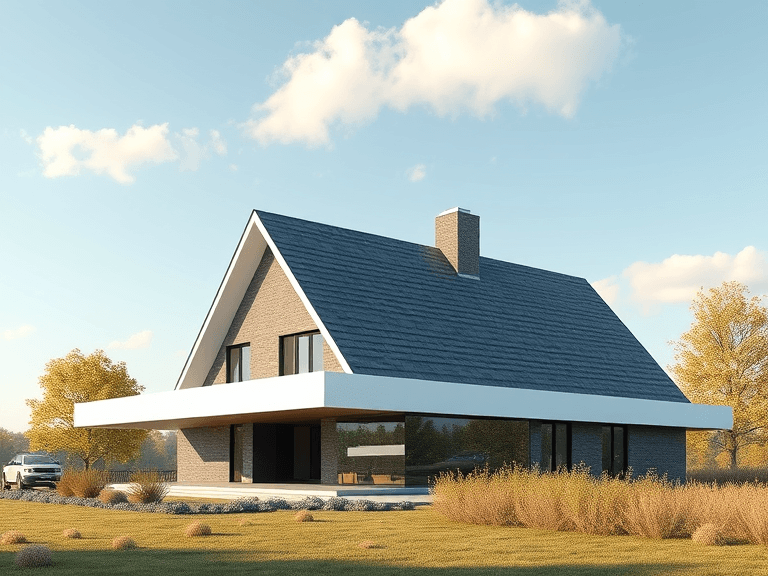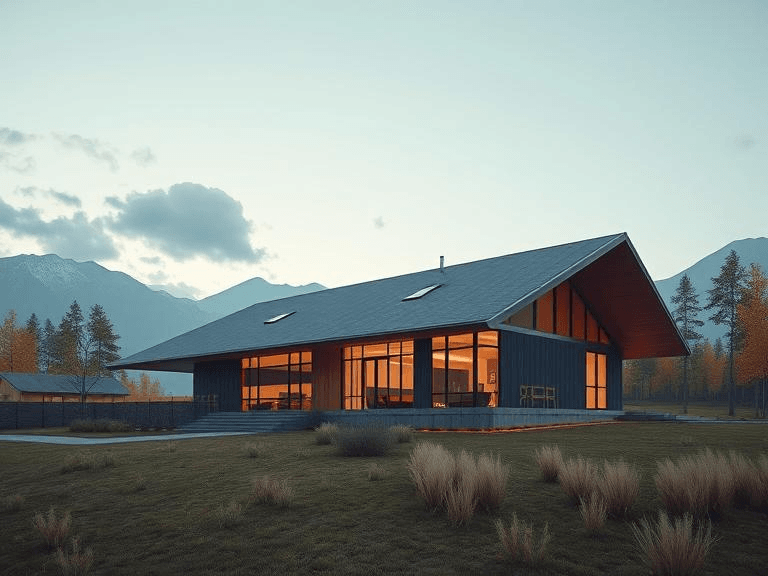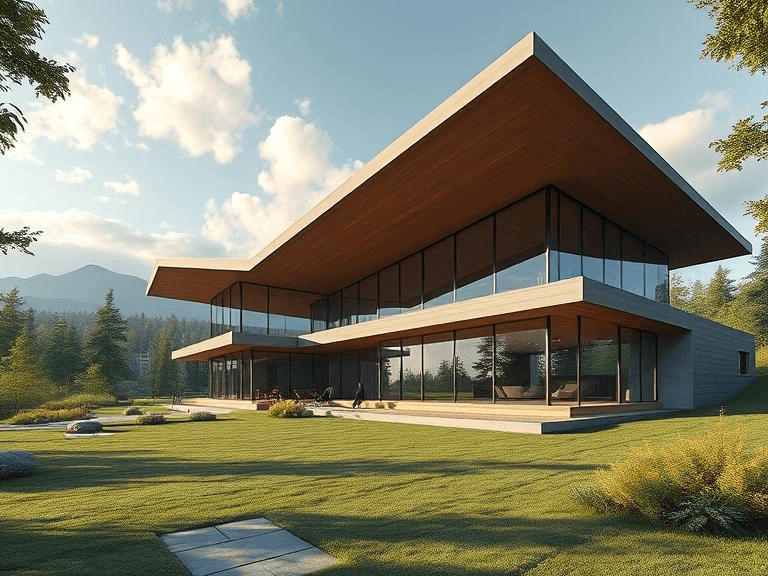
Choosing the right roofing option requires careful consideration of various factors that influence your specific requirements. One of the primary considerations is the climate in your area. The roofing material you select should be capable of withstanding the unique weather conditions prevalent in your region. For instance, homeowners in areas that experience heavy snowfall may benefit from roofs with a steep slope, which facilitates the quick shedding of snow. Conversely, those residing in regions with high heat and humidity may prefer materials that reflect sunlight and help maintain indoor temperatures.
Another critical aspect is the architectural style of your home. Your roofing choice should complement the overall design of the structure. For example, traditional homes often feature materials such as slate or asphalt shingles, while modern houses may utilize metal roofing or flat surfaces for a sleek, minimalist appearance. Ensuring that the roofing aligns with the existing aesthetic not only enhances curb appeal but can also improve property value.
Personal preferences also play a significant role in selecting the ideal roofing option. Aesthetic choices such as color, texture, and finish are important for homeowners who want their roofing to reflect their style. Many homeowners might prioritize durability and maintenance requirements, while others may focus on energy efficiency or eco-friendliness. Understanding your priorities can help to streamline the selection process and ensure that the material chosen meets your long-term needs.
Moreover, it is essential to assess the existing structure of your home. Roofs must be robust enough to support their weight and withstand the climate, so consulting with a professional can provide valuable insights into structural considerations. Overall, evaluating these elements can help you make an informed decision on the best roofing material and style for your home.
Exploring Common Roofing Materials
When selecting a roofing material, it is crucial to consider not only aesthetics but also durability, cost, energy efficiency, and maintenance. Among the most prevalent options are asphalt shingles, metal roofs, wood shakes, tile, and slate, each offering distinct advantages and disadvantages.
Asphalt shingles are widely favored due to their affordability and ease of installation. They are available in various colors and styles, making them a versatile choice for many homeowners. However, while they typically last 15 to 30 years, their durability can be compromised in extreme weather conditions, necessitating periodic maintenance or replacement.
Metal roofs have gained popularity due to their longevity, lasting upwards of 50 years. They are highly resistant to weather elements, making them an excellent choice for areas prone to severe storms. Metal roofing is also energy-efficient, reflecting heat during hot months. However, this option can be more expensive upfront and may require specialized installation to avoid issues like expansion and contraction.
Wood shakes offer a classic look and excellent insulation properties. They can last 30 years or more when properly maintained. However, wood roofing demands regular maintenance and is susceptible to rot, insects, and fire hazards, which can lead to increased long-term costs.
Tile roofs, made from clay or concrete, are known for their longevity, often exceeding 50 years. They are highly durable, energy-efficient, and resistant to decay. However, tile roofs can be heavy and may require additional structural support, thus increasing installation costs.
Lastly, slate roofing is celebrated for its unmatched durability and elegance. A slate roof can last over a century, providing a timeless aesthetic. Nevertheless, the significant upfront cost and the need for skilled labor for installation can be substantial drawbacks for many homeowners.
In conclusion, when exploring roofing materials, it is essential to weigh the benefits and limitations of each option, as the right choice will depend on individual needs, budget, and regional climate factors.
Cost Analysis: Budgeting for Your Roof
When selecting a roofing option, understanding the cost implications is crucial for effective budgeting. Various roofing materials come with distinct price points, and it is essential to consider both the initial expenditure and potential long-term expenses. Popular roofing materials such as asphalt shingles, metal, tile, and slate vary significantly in price. Asphalt shingles generally represent one of the most budget-friendly options, with costs ranging from $90 to $100 per square. In contrast, metal roofing, which offers a longer lifespan, can range from $100 to $300 per square. Tile may be appealing for its durability but can cost upwards of $300 per square, making it a considerable investment.
Labor costs also play a significant role in roofing expenses. These costs can fluctuate based on complexity, roof pitch, and regional labor rates. Hiring experienced contractors is vital to ensure quality installation, though it may incur higher initial costs. Homeowners should factor in an additional 10% to 20% for labor when budgeting for their roofing project. Importantly, budget planning should not solely focus on the initial costs; it should also encompass potential long-term expenses, such as maintenance, repairs, and energy efficiency. For instance, certain roofing materials may require less frequent maintenance, resulting in savings over time.
Moreover, homeowners should prepare for unexpected expenses that may arise during the roofing process, such as hidden structural damages or required upgrades. Setting aside a contingency fund of about 10% of the total roof replacement budget can provide a safety net against unforeseen costs. Planning and budgeting for these considerations will not only enhance peace of mind but also ensure that the chosen roofing option suits both the homeowner’s immediate financial situation and long-term plans.
Assessing Climate Impact on Roofing Choices
When selecting roofing materials, the local climate plays a crucial role in determining which options will perform best over time. Different weather conditions can impact the integrity, durability, and effectiveness of roofing systems, making it essential for homeowners and builders to consider climate-related factors carefully.
For instance, in regions that experience high temperatures and humidity, such as the southern United States, materials like asphalt shingles may be more prone to deterioration due to heat exposure and moisture accumulation. In such climates, it is advisable to opt for roofing options that are commonly temperature-resistant and have moisture-wicking properties, such as metal roofing or ceramic tiles. These materials provide a robust defense against heat while also minimizing the likelihood of mold and mildew growth.
Conversely, in areas prone to heavy snowfall and freezing temperatures, like the northern parts of the country, the material selection should prioritize features such as snow and ice resistance. Asphalt shingles or slate can be effective, provided they are installed with adequate insulation and roof pitch to facilitate the effective shedding of snow. Additionally, roofing options that incorporate an underlayment for ice and water shielding can further safeguard against potential leaks due to melting snow and subsequent freeze cycles.
Moreover, in regions prone to severe weather events such as hailstorms, opting for materials that boast enhanced impact resistance is essential. Roofing products made of fiberglass or metal often provide better resistance to hail damage and may prove to be more cost-effective in the long run due to their longevity and lower maintenance needs.
Ultimately, taking into account the specific climate challenges faced can greatly influence the performance and lifespan of roofing materials. By carefully assessing the local weather conditions and their potential effects, homeowners can make informed decisions that enhance the sustainability and resilience of their roofing investments.

Regulations and Permits: What You Need to Know
When considering a new roofing project, understanding the necessary regulations and permits is essential for homeowners. The roofing industry is subject to various local building codes and regulations that can differ significantly by region. These codes are designed to ensure the safety, durability, and performance of roofing materials and installations. Before embarking on any roofing replacement or installation, homeowners should consult their local building department to ascertain the specific permits required in their area.
Permits are crucial because they not only offer the legal authorization to proceed with construction but also ensure that the work adheres to established safety standards. Typically, a roofing permit will necessitate submitting detailed plans that outline the materials and methods to be employed. Furthermore, inspections may be mandated at various stages of the project, ensuring compliance with the local regulations.
Working with licensed roofing professionals can streamline this process significantly. Licensed contractors are usually knowledgeable about local building codes and permit requirements. They often handle the permit application process on behalf of their clients, alleviating some of the burdens from the homeowner. Additionally, a reputable contractor will possess the necessary liability insurance and worker’s compensation coverage, further mitigating risks associated with roofing projects.
Moreover, if your property is part of a Homeowners Association (HOA), it is essential to review their guidelines as well. HOAs often have specific requirements regarding the types, colors, and materials of roofing that can be used in their jurisdiction. Failure to comply with these restrictions could lead to fines or the necessity to remove or replace non-compliant roofing.
Thus, ensuring that all necessary permits are obtained, working with qualified professionals, and adhering to HOA regulations are crucial steps for any homeowner looking to undertake roofing work effectively and legally. This can help avoid potential complications and facilitate a smoother construction process.
Energy Efficiency and Environmental Impact
When it comes to roofing options, energy efficiency plays a crucial role in both the performance of the building and its environmental impact. Different roofing materials offer varying insulation properties and reflectivity, directly influencing heating and cooling costs. For homeowners looking to minimize energy consumption, choosing a reflective roofing option can significantly reduce the urban heat island effect and improve indoor comfort. Roofing materials such as metal and certain types of asphalt shingles come with reflective coatings that deflect sunlight, thereby reducing the need for air conditioning during the hotter months.
In addition to reflectivity, the insulation capabilities of a roofing material are also important. High R-value materials provide better thermal resistance, helping to maintain comfortable indoor temperatures regardless of the season. This results in lower energy bills as homeowners rely less on HVAC systems. For instance, materials such as slate, tile, or green roofs not only offer excellent insulation but also have longevity, reducing the need for frequent replacements and associated resource depletion.
Moreover, opting for sustainable roofing materials is a considerable aspect for eco-conscious homeowners. Options like recycled shingles, clay tiles, or even living roofs made of vegetation contribute positively to environmental sustainability. These materials not only reduce landfill waste but can also help in natural stormwater management, further diminishing the environmental footprint of a home. The selection of roofing materials that are sourced sustainably, or those having a longer lifespan, is increasingly relevant in addressing climate change challenges.
In summary, the energy efficiency and environmental impact of roofing materials are pivotal considerations that can lead to substantial savings and a reduced ecological footprint for homeowners. By selecting reflective, insulating, and sustainable options, one can align their roofing choice with their eco-friendly values while enhancing the comfort and efficiency of their living space.
Roofing Aesthetics: Choosing Based on Style
When selecting a roofing option, aesthetics plays a pivotal role, influencing not only the visual appeal of a home but also its overall value. The roofing material you choose can dramatically affect the perceived style and character of your property. Consequently, homeowners should consider how various roofing styles, colors, and textures harmonize with the architectural design of their home.
Color is one of the most significant factors in roofing aesthetics. Shades can be selected to either complement or contrast the exterior paint and landscaping. Traditional roofing colors include neutral tones such as grey, beige, or brown; however, bold options like red or blue can add a distinctive flair. A well-selected color can enhance curb appeal and make a lasting impression, thereby increasing property value.
Texture is another consideration that should not be overlooked. Different roofing materials offer varying textures, which can contribute to the overall look of a home. For instance, wooden shingles create a rustic charm, while slate roofing provides a more sophisticated appearance. The rough, natural finish of certain materials can be contrasted with smoother, modern alternatives for a balanced aesthetic. Understanding the interplay of texture alongside color helps in achieving the desired style.
Architectural compatibility is crucial when selecting roofing options. A contemporary home may benefit from sleek metal or flat roofing, while classic designs often call for materials like clay tiles or asphalt shingles that evoke traditional aesthetics. It is essential to assess the architectural style of a building and choose roofing that complements its form. This not only enhances the visual appeal but also ensures cohesion within the neighborhood.
Ultimately, when choosing roofing aesthetics, homeowners should consider a combination of color, texture, and architectural style to create a cohesive and appealing exterior. Making informed decisions in these areas will yield a roof that enhances the beauty and character of the home.
Maintenance and Longevity of Roofing Options
When selecting a roofing option, understanding the maintenance requirements and expected lifespan of various materials is crucial for making an informed decision. Different roofing materials come with varied upkeep needs and durability, ultimately impacting their long-term viability and suitability for your lifestyle.
Asphalt shingles are among the most commonly used roofing options, primarily due to their affordability and ease of installation. Generally, asphalt roofs have a lifespan of 20 to 30 years. They require minimal maintenance, typically involving periodic inspections and cleaning to remove debris that may hinder drainage. However, they may need replacement or repairs in areas exposed to harsh weather conditions more frequently.
Metal roofing is another popular choice, renowned for its longevity and durability. Offering a lifespan of 40 to 70 years, metal roofs can withstand extreme weather, making them a viable option for various climates. Regular maintenance is simple; it usually includes checking for rust, loose fasteners, and ensuring no debris has accumulated. Additionally, metal roofs are energy-efficient, reflecting heat and potentially lowering cooling costs.
Tile roofs, commonly made from clay or concrete, can last well over 50 years with proper care. These roofs are highly resistant to fire, insects, and rot. However, maintenance can be somewhat more involved, as cracked or broken tiles need replacement to prevent water infiltration. It is also essential to ensure proper underlayment is in place to enhance longevity.
Finally, slate roofing is another enduring option with a lifespan of 75 years or more. While it requires minimal maintenance, the installation can be more costly, making it a less frequent choice. Regular inspections are advised to address any issues that may arise due to the weight of the material and potential wear over time.
Ultimately, selecting the right roofing option involves not only considering the initial cost but also taking into account the long-term maintenance requirements and lifespan, ensuring that you choose a solution that complements your lifestyle and budget.
Consulting with Roofing Professionals
When it comes to selecting the right roofing option, consulting with experienced roofing professionals is crucial. These roofing specialists bring a wealth of knowledge and experience, enabling them to provide valuable insights into various roofing materials, styles, and installation techniques that are suitable for your specific needs.
Before engaging with contractors, it is important to prepare a list of pertinent questions. Inquire about their experience in the industry, request references from previous clients, and ask about the types of roofing systems they are familiar with. Additionally, it is wise to ask about their warranty policies and the services they offer post-installation. This understanding will help you gauge the contractor’s reliability and expertise.
Getting estimates from multiple roofing professionals is essential for making an informed choice. Each contractor should provide a detailed breakdown of costs, including labor and materials, which allows for accurate comparison. When reviewing estimates, pay attention not only to the overall price but also to the quality of materials suggested. Ensure that the estimates reflect similar roofing conditions to maintain consistency in comparison. It may also be beneficial to ask if they offer financing options, as some contractors provide flexible payment plans that can ease the financial burden.
Collaboration with roofing experts often leads to better decision-making. Professionals can assess your current roof’s condition and guide you in determining whether repairs or replacements are necessary. Moreover, with their expertise, they can recommend roofing options that enhance energy efficiency, improve aesthetic appeal, or even comply with specific local building codes. Ultimately, choosing to consult with roofing professionals is an investment in both the longevity of the roof and the overall value of the property. Engaging with these experts ensures a tailored approach to meeting your individual roofing needs.


